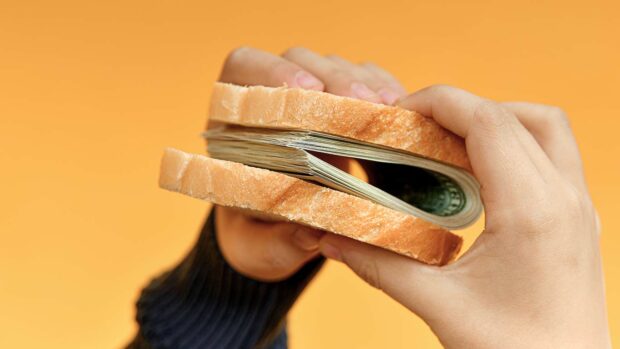So many people dream of owning a home, but not everyone has the resources to do so. FHA loans were created to solve this problem. These government-backed loans bridge the gap, so more people have access to homeownership opportunities.
That said, purchasing a home using an FHA loan isn’t always a linear process. As with conventional loans, there are guidelines you must meet to qualify. To help you understand the ins and outs, here is a simple explanation of what FHA loans are and how they work.
What is an FHA Loan?
FHA loans are mortgages backed by the Federal Housing Administration. They’re designed for people unable to save a large deposit or who don’t have the best credit. The department of Housing and Urban Development (HUD) oversees the FHA loan program, so you’ll find most information you need on their website.
Although the FHA doesn’t directly give out loans, they insure ones given by FHA-approved mortgage lenders, be it a bank or other financial institution. This means if a borrower defaults on their loan, the lender is partially reimbursed by the government. This added cushion gives lenders peace of mind and improves accessibility for people who need help.
Who is an FHA Loan for?
FHA loans are designed for individuals unable to get conventional loans due to low income, less than perfect credit, or their inability to gather a down payment. Because FHA loans have lower credit score and down payment requirements, such individuals are more likely to get approved.
The catch is that borrowers must pay upfront mortgage insurance and FHA mortgage insurance premium for 11 years or the life of the loan depending on the down payment size.
FHA Loan requirements
As with any lender, FHA lenders want to know you have a stable income, are reliable, and can afford the house you’re buying. However, unlike conventional loans, there’s a lot more flexibility. Here is how to qualify for an FHA loan based on what lenders are looking for.
Proof of Income
As part of the application process, be ready to show proof of income for the past two years. What passes as proof of income? Pay stubs, W2s, bank statements, and any other tax return forms fit the bill. Any documents you have that show employment-based and non-employment-based income should be fine.
Showing every form of consistent income you have is key; the more you have, the stronger your application. Because lenders are looking for consistency, you should avoid changing jobs often, and changing industries.
Some forms of income that are acceptable include:
- Full-time work
- Part-time work
- Commissions (if consistently earned)
- Self-employed earnings
- Tips
- Foreign payments
- Public assistance
- Retirement pay
- Certain 401 (k) investment programs
- Expected income (new job, raise, retirement expected within 60 days of closing)
For those who are self-employed or run a business, two years of income is often required. It’s the best way to show lenders your income is likely to continue in the future since you don’t have a predictable salary.
What if you don’t make enough? Don’t worry about how much you make as there is no set income amount you must earn to get approved for a mortgage. That said, the amount you earn will affect the size of the loan you can get. They’ll look at your debt-to-income ratio (your debt compared to income) and use that to determine how much house you can afford.
Anyone who went through bankruptcy has a waiting window of one to two years before they can apply for an FHA mortgage. Those who have a foreclosure must wait for three. However, if either resulted from extreme circumstances beyond your control, lenders might make an exception.
Minimum 500 FICO score
One of the most attractive aspects of an FHA loan is the credit score requirement. With a score as low as 500, you can apply for a mortgage loan. However, as with conventional loans, higher scores mean lower down payments. If you apply with a 580 or higher FHA score, you only need a deposit of 3.5%. However, those with scores between 500 and 579 will have to put 10% down. If your credit score is below 500, consider improving your credit score before applying.
An FHA approved property
When it comes to property standards, FHA loans can be pretty strict. Minimum property standards are put in place to protect lenders from bad investments.
Keep this in mind when house hunting; if the house you choose doesn’t meet FHA minimum property standards, they could deny your application. For this reason, they require you to hire an appraiser to ensure the home is safe, secure, and sound before approving mortgage loans. If the property of your dreams doesn’t qualify, however, there is hope with an FHA 203(k) loan which you’ll learn more about below.
Homebuyer Education Program
First-time homebuyers (haven’t owned a property in the last three years) are often required to participate in a program to ensure they understand the basics of homeownership before purchasing. It Is called homebuyer education or pre-purchase counseling. The hope is that by the end of the program, you’ll be a more informed buyer, thus increasing your chances of homeownership success.
Aside from those buying homes for the first time, individuals applying for the FHA Home Equity Conversion Mortgage (HECM) are also required to partake in housing counseling if they want approval.
The good news is programs are flexible. You can choose from free one-on-one, group, online, or in-person counseling sessions. Ideally, you should complete the classes before starting your house hunt. You’ll learn about:
- Process of buying a home
- How to budget
- How to shop for a mortgage
- Home maintenance
Note that counseling must be provided by a HUD-approved housing counseling agency. Not every loan program or state requires homebuyer education, so check before applying. That said, it’s worth taking as it could help reduce your chances of going into foreclosure.
Debt-to-income ratio
How do lenders determine whether you can afford a mortgage? One way is to check your
debt-to-income ratio (DTI). It tells them what percentage of your gross monthly income goes towards paying debt. There are two types of DTI—front-end and back-end. The front end only calculates the amount that goes towards housing costs, while the back-end ratio encompasses all your debt. If you have large amounts of debt going out monthly and not enough money coming in, it’s a red flag for lenders.
Although FHA lenders are more lenient with DTI than conventional lenders, there’s still a cap. If you have a credit score below 580, your front-end debt ratio can’t be over 31%, while your back-end debt ratio can’t exceed 43%. With higher credit scores, it could go up to a 40/50 ratio.
When calculating DTI, lenders want to know about monthly payments that show up on your credit report such as auto payments, student loans, credit cards, and personal loans. Also, keep in mind that child support, alimony, and maintenance payments all count towards your debt-to-income ratio. Some documents lenders may request are court orders, receipts, or anything else that shows your monthly obligations.
You can use our debt-to-income ratio to calculate your ratio before applying.
Find solutions to pay off debt, so it’s easier to get approved.
Types of FHA Loans
There are 15 different FHA loans, so knowing the difference between each is important. Here is a summary of 10 of the most common and what they’re used for. Unlike conventional loans, FHA loans only come in fixed terms of 15 and 30 years.
| Loan Type | Description |
|---|---|
| Fixed-Rate FHA | The interest rate stays the same throughout the life of the loan and terms are either 15 or 30 years. |
| FHA 203(k) Rehabilitation Mortgage Insurance | Finance for homes that are old, in need of repairs, and don’t meet minimum property standards. Loan can be used to finance mortgage and renovations. |
| FHA 203 (k) Streamline | Suitable for uncomplicated home improvements or repairs. The maximum prospect can borrow is $35,000, making it unsuitable for home buying. |
| FHA Energy Efficient Mortgage | Provides financing for current and prospective homeowners to use towards energy-saving improvements and renewable energy systems. |
| Home Equity Conversion Mortgage (HECM) | A type of reverse mortgage that allows seniors to use their home equity as an income stream. Withdrawal amount depends on age of borrower, interest rate, and lesser of appraised value, mortgage limit, or sale price. |
| FHA Condominium Loan | Some condos are now eligible for financing through FHA loans. Property requirements are rigid and buildings can’t be near freeways, airports, railroads, or designated flood zones. |
| FHA Section 245(a) loan | Also known as the Growing Equity Mortgage, this loan has a graduated payment structure (GPM), meaning payments start low and gradually increase. You determine how the payments increase, and increased payment amounts go towards the principal (balance left to pay on a mortgage), so you build equity quicker. |
| FHA Adjustable-rate mortgage Section (251) loan | Interest rate starts low for an agreed period (1,3,5, or 7 years) then changes as frequently as once per year. |
| FHA Jumbo Loan | These loans exceed the county limits for a loan. Thus, the approval process is stricter, requiring higher credit score, a self-funded deposit, and a maximum debt-to-income ratio of 43%. Interest rates are also higher than other FHA loans. |
| Mortgage Insurance for Disaster Victims Section 203(h) | Insured mortgages for victims of major disasters who lost their homes. Enables them rebuild or buy a new home. |
Advantages of FHA Loans
The greatest advantage of FHA loans is in their flexibility. Below are specific advantages that make them an attractive option, especially for first time home buyers.
- Lower credit score requirements
- 5% down payment with 580 credit score and 10% with a score of 500
- Higher DTI ratio than with conventional mortgages
- Competitive interest rates for those with low credit scores
- Down payments can be a gift
- Down payment assistance programs or grants to help with closing costs
- Seller can pay up to 6% of closing costs
- No prepayment penalties (fee for paying mortgage early or refinancing)
Disadvantages of FHA Loans
While FHA loans create many opportunities to get on the property ladder, they also have their downsides. Some include:
- Mandatory upfront and premium mortgage insurance
- Stricter property requirements
- Can only be used for a primary residence
- Some sellers prefer conventional loans
- Loan limits based on regions
How to find FHA lenders
If you’ve decided the pros of an FHA loan outweigh the cons, what’s next? It’s time to find an FHA lender, and here’s how you do it.
Step 1: Ensure they’re FHA-approved
As mentioned earlier, the FHA isn’t a mortgage lender. They simply back loans provided by FHA-approved lenders.
What’s the difference between an FHA approved lender and a conventional lender?
The former thoroughly understand FHA products and is qualified to provide financing. Some requirements for FHA-approved lenders include having a license in their state of operation, and at least 3 years’ experience in loan origination.
If you’re unsure about how qualified they are, ask questions to gauge their experience. It’s a long-term investment, so you don’t want to end up with the short end of the stick. Also, the HUD website has a search tool that can help you find FHA-approved lenders. There’s also the National Directory of FHA Approved 203(k)Lenders.
Step 2: Compare lenders
Every FHA lender sets their own loan terms and interest rates. Finding the best lender is about finding one who has terms that suit your needs. Shop for multiple lenders at once. It’s the only way to see which has the most favorable rates and loan terms for your long-term goals. Ultimately, you want to choose a lender who will give you the most for your money. If you find the process too challenging, you could always contact a mortgage broker who specializes in FHA loans.
Step 3: Gather closing costs
Once you’ve found an FHA lender and they approve your loan, you have one more hurdle—gathering closing costs. While the costs can be intimidating, knowing how much you have to spend is a step in the right direction. Closing costs on an FHA loan can range between 2%-5% of the home’s value. In a real-life example, that means closing costs on a $230,000 home would be between $4,600- $11,500.
Here are the most common costs you’ll encounter.
Down payment
When you apply for a mortgage loan with a conventional lender, lower credit scores may equate to bigger deposit requirements. This is the case with FHA loans, too. If your credit score falls below 500, lenders require a 10% down payment. However, with a credit score of 580+, you only need a 3.5% down payment.
If you can’t afford the down payment, see if you’re eligible for FHA down payment assistance programs. Unlike conventional loans, you can use government assistance programs or gifts for your down payment. You can also negotiate with the seller, as they may be willing to cover a portion of the costs. The FHA allows sellers to cover up to 6% of the home’s sale price.
Mortgage insurance
When budgeting for your mortgage, don’t forget to include mortgage insurance. Lenders require it to prevent losses due to defaults or foreclosures. For FHA loans, you must pay both an upfront Mortgage Insurance Premium and an ongoing Mortgage Insurance Premium (MIP). By contrast, conventional loans don’t require mortgage insurance if you make a down payment of at least 20%.
- Upfront Mortgage Insurance is a one-off payment required at closing. You could pay cash or roll the cost into your monthly loan payments (could mean higher interest). This will cost you 1.75% of the loan value. For example, if you borrow $175,000 for a home, you’d pay about $3,060 upfront at closing.
- Mortgage Insurance Premium is required for the lifetime of the loan or 11 years, depending on the size of your down payment and the length of your loan. If you put down a deposit greater than 10%, you can cancel MIP after 11 years. With a smaller deposit, you will have to pay for the lifetime of the loan. In terms of cost, it ranges from 0.45%-1.05% of the loan amount, with 15-year loan terms attracting lower MIP. So, MIP on a $150,000 home at 0.45% would come to $670 annually.
Note that the upfront mortgage insurance and MIP cannot be curbed. The only way to cancel MIP is to refinance the loan or sell the house. There is an exception for those who purchased their home before 2013; they can cancel if they have 22% equity and made all payments on time. With conventional loans, once you’ve paid over 20% of the home’s value, you can cancel your mortgage insurance.
Other costs
Aside from insurance and the down payment, you have other fees to pay, too. Some additional costs associated with closing to consider are:
- Mortgage fees: prepaid interest and escrow fees
- Insurance, taxes, and dues: annual property tax, homeowner’s insurance, annual flood insurance, and homeowner’s association fee
- Loan costs: application, appraisal, credit report, lender’s inspection, attorney fees, assumption fee, and origination fee
- Title: Title insurance, title examination, document preparation, notary fees, and attorney fees
- Government fees: recording fees, city/county tax or stamps, state tax or stamps
- Discount/mortgage points: prepaid interest you buy to reduce your interest rate on payments (excluding tax and insurance). 1 point is usually equal to 1% of the loan amount and knocks 0.25% off your interest.
- Additional fees: pest inspection, flood determination, closing fee, and broker fees
Your lender should give you a loan estimate within a few days of you submitting your application. You’ll find a detailed breakdown of all closing costs there.
FHA loan limits for 2024
Every state has different lending limits. In states where housing is more expensive, lending limits are higher. Other factors that influence lending limits are the type of home and conventional loan rates set by Fannie Mae (Federal National Mortgage Association) and Freddie Mac (Federal Home Loan Mortgage Corporation). Here are the loan limits in high and low-cost areas for 2024.
| Home Type | Low-Cost Area | High-Cost Area |
|---|---|---|
| Single family home | $498,257 | $1,149825 |
| Duplex | $637,950 | $1,472,250 |
| Tri-plex | $771,125 | $1,779,525 |
| Four-plex | $958,350 | $2,211,600 |
You can find detailed information about loan limits in your area on the HUD website.
FHA loan relief
If you face financial hardships outside of your control, there is the option of FHA loan relief. It provides homeowners tangible financial solutions to help them avoid foreclosure and losing their homes. How? Through the FHA Home Affordable Modification Program, you could get loan payments permanently reduced. However, you must show legitimate hardships, be it losing a job or an increase in living expenses.
The program also requires you to complete a trial payment plan where you must make three consecutive payments on time. After that, you can continue paying at the lower rate.
If you need help managing your finances before applying for an FHA loan, contact us today. We can connect you with a HUD-approved mortgage counselor to get you on track.






